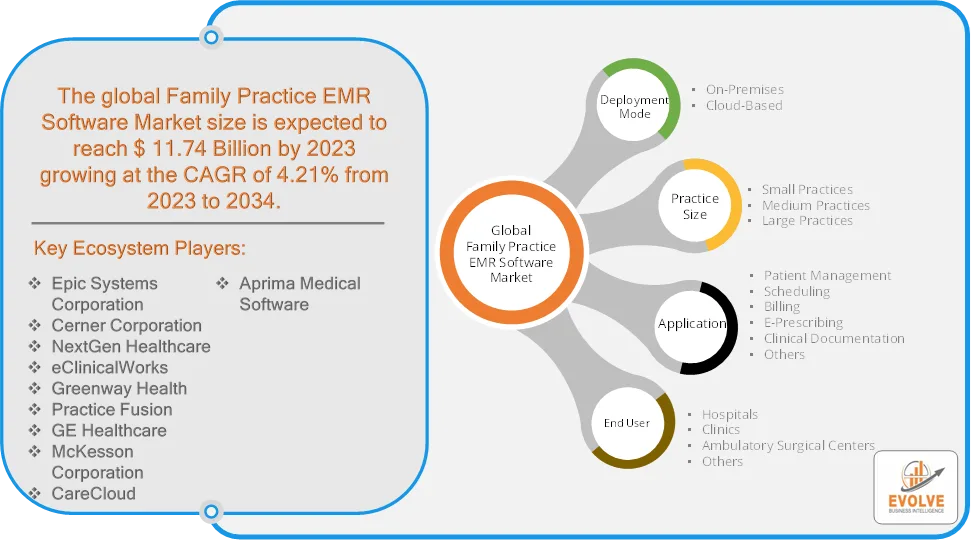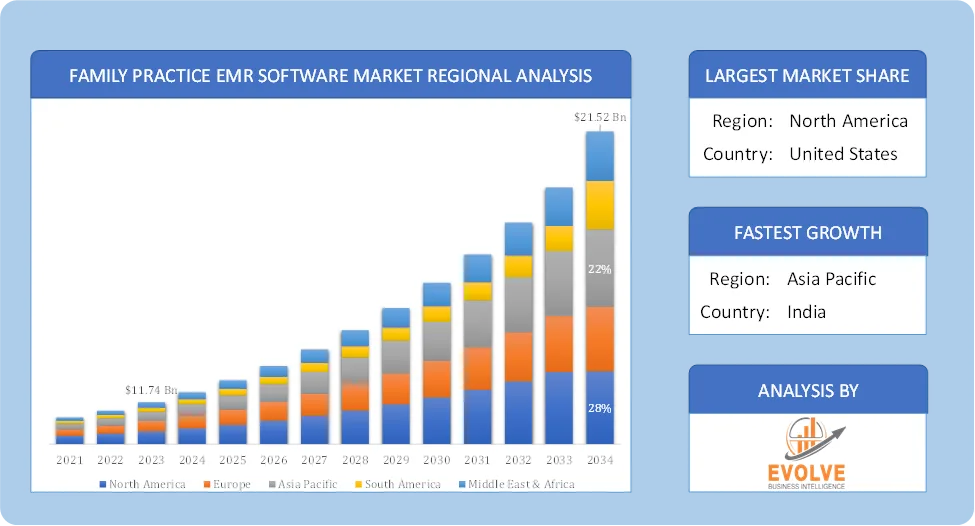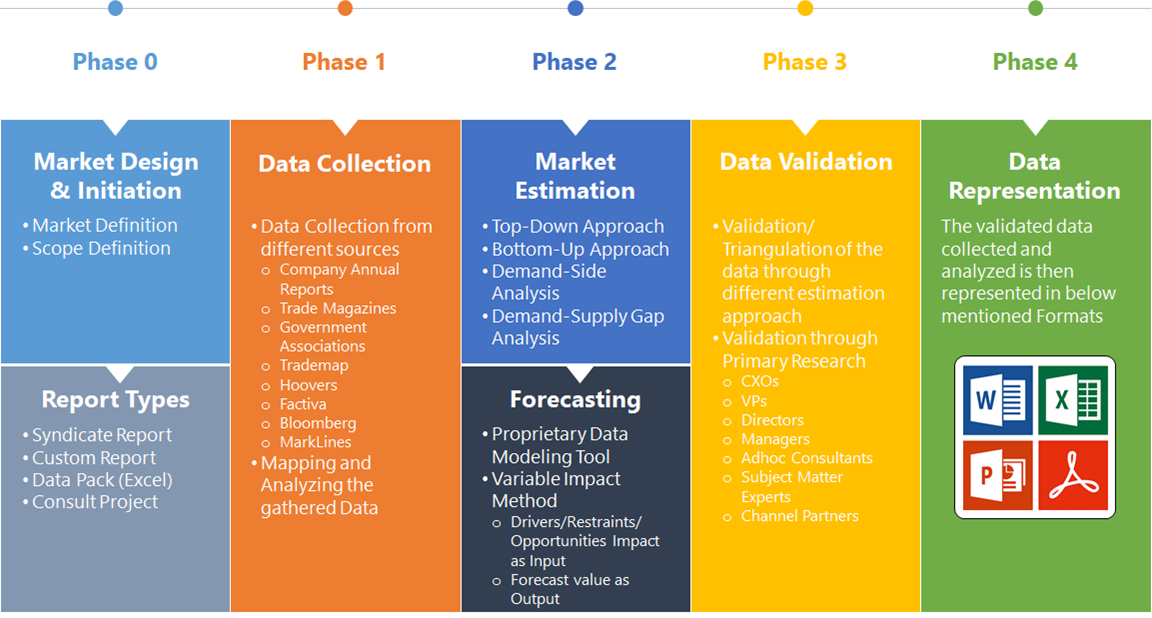Family Practice EMR Software Market Overview
The Family Practice EMR Software Market size accounted for USD 11.74 Billion in 2023 and is estimated to account for 13.88 Billion in 2024. The Market is expected to reah USD 21.52 Billion by 2034 growing at a compound annual growth rate (CAGR) of 4.21% from 2024 to 2034. The Family Practice EMR Software Market is a growing segment within the global travel insurance industry. It caters to travelers who participate in high-risk activities such as skiing, rock climbing, scuba diving, mountaineering, paragliding, bungee jumping, and more. These specialized insurance policies are designed to cover the unique risks associated with such activities, which are typically excluded from standard travel insurance plans.
The Family Practice EMR Software Market presents significant opportunities for growth as more people seek adventurous travel experiences and become increasingly aware of the need for specialized protection. Insurance providers are adapting to these trends by offering more comprehensive, flexible, and technologically advanced solutions.
Global Family Practice EMR Software Market Synopsis
 Family Practice EMR Software Market Dynamics
Family Practice EMR Software Market Dynamics
The major factors that have impacted the growth of Family Practice EMR Software Market are as follows:
Drivers:
Ø Digital Transformation in Healthcare
Family practices are increasingly adopting digital tools to streamline operations. Transition from paper-based records to electronic systems improves accuracy and efficiency. Family practice EMR software automates clinical workflows, reduces administrative burden, and shortens patient documentation time. Integration with billing systems and e-prescriptions enhances overall practice productivity. EMRs enable better tracking of patient history and more personalized treatment plans and portals allow patients to view records, schedule appointments, and communicate with providers.
Restraint:
- High Implementation and Maintenance Costs and Data Security
Small and independent family practices often face budget constraints. Initial setup, customization, training, and ongoing maintenance can be expensive, especially for on-premise systems. EMR systems contain sensitive patient information, making them prime targets for cyberattacks. Some physicians and staff are hesitant to switch from paper-based systems or older EMRs due to lack of digital skills or fear of disruption and resistance is particularly common in smaller, rural, or older-generation-run practices and the transition period can be disruptive to daily operations, potentially reducing patient throughput.
Opportunity:
⮚ Expansion of Cloud-Based EMR Solutions
Cloud-based EMRs offer scalability, remote access, lower upfront costs, and automatic updates, making them highly attractive to small and mid-sized family practices. Increasing internet penetration and mobile access further support this shift. Demand for telehealth-ready EMR systems is growing rapidly post-COVID-19 and family practice EMRs with integrated video consultation, patient portals, and wearable data tracking are gaining traction. EMRs with AI-powered clinical decision support, predictive analytics, and natural language processing (NLP) enhance clinical insights and diagnostic accuracy.
Family Practice EMR Software Market Segment Overview
Based on Deployment Mode, the market is segmented based on On-Premises, Cloud-Based. The On-Premises segment dominant the market. The On-Premises EMR systems involve the installation of software on local servers within a medical practice, offering complete control over data management and security. These systems are particularly favored by large practices and healthcare institutions with the necessary IT infrastructure and resources to manage and maintain on-premises solutions.
By Practice Size
Based on Practice Size, the market segment has been divided into Small Practices, Medium Practices, Large Practices. The Small practices segment dominant the market. Small practices, typically consisting of one to three physicians, have unique needs and challenges when it comes to EMR adoption. The primary concern for small practices is the cost and resource requirements associated with implementing and maintaining an EMR system.
By Application
Based on Application, the market segment has been divided into Patient Management, Scheduling, Billing, E-Prescribing, Clinical Documentation, and Others. The Patient Management segment dominant the market. Patient Management is a critical application area, encompassing functionalities such as patient registration, appointment scheduling, and medical history tracking. EMR systems with robust patient management features help practices to streamline administrative tasks, reduce errors, and enhance patient satisfaction.
By End User
Based on End User, the market segment has been divided into Hospitals, Clinics, Ambulatory Surgical Centers, and Others. Hospitals are significant end-users of EMR systems due to the high volume of patients and complex care delivery processes they manage. Hospitals require robust EMR solutions with advanced features such as interoperability, clinical decision support, and comprehensive reporting capabilities to support their diverse needs and ensure high-quality patient care.
Global Family Practice EMR Software Market Regional Analysis
Based on region, the global Family Practice EMR Software Market has been divided into North America, Europe, Asia-Pacific, the Middle East & Africa, and Latin America. North America is projected to dominate the use of the Family Practice EMR Software Market followed by the Asia-Pacific and Europe regions.
 North America Family Practice EMR Software Market
North America Family Practice EMR Software Market
North America holds a dominant position in the Family Practice EMR Software Market. It has advanced healthcare infrastructure and high levels of technology adoption. High healthcare expenditure and a large number of healthcare institutions and presence of major EMR vendors and continuous innovation in healthcare IT. Increasing demand for patient-centered care, improved efficiency, and interoperability across healthcare systems and also strong focus on cloud-based solutions, integration with telehealth platforms, and advanced analytics capabilities.
Asia-Pacific Family Practice EMR Software Market
The Asia-Pacific region has indeed emerged as the fastest-growing market for the Family Practice EMR Software Market industry. Rapidly developing healthcare infrastructure and increasing government investments in healthcare IT. Growing prevalence of chronic diseases and a large patient population and rising adoption of digital technologies and increasing awareness of the benefits of EMRs. Increasing adoption of cloud-based EMRs, growing focus on mobile accessibility, and integration of AI for improved diagnostics and efficiency.
Competitive Landscape
The global Family Practice EMR Software Market is highly competitive, with numerous players offering a wide range of software solutions. The competitive landscape is characterized by the presence of established companies, as well as emerging startups and niche players. To increase their market position and attract a wide consumer base, the businesses are employing various strategies, such as product launches, and strategic alliances.
Prominent Players:
- Epic Systems Corporation
- Cerner Corporation
- NextGen Healthcare
- eClinicalWorks
- Greenway Health
- Practice Fusion
- GE Healthcare
- McKesson Corporation
- CareCloud
- Aprima Medical Software.
Scope of the Report
Global Family Practice EMR Software Market, by Deployment Mode
- On-Premises
- Cloud-Based
Global Family Practice EMR Software Market, by Practice Size
- Small Practices
- Medium Practices
- Large Practices
Global Family Practice EMR Software Market, by Application
- Patient Management
- Scheduling
- Billing
- E-Prescribing
- Clinical Documentation
- Others
Global Family Practice EMR Software Market, by End User
- Hospitals
- Clinics
- Ambulatory Surgical Centers
- Others
Global Family Practice EMR Software Market, by Region
- North America
- US
- Canada
- Mexico
- Europe
- UK
- Germany
- France
- Italy
- Spain
- Benelux
- Nordic
- Rest of Europe
- Asia Pacific
- China
- Japan
- South Korea
- Indonesia
- Austalia
- Malaysia
- India
- Rest of Asia Pacific
- South America
- Brazil
- Argentina
- Rest of South America
- Middle East & Africa
- Saudi Arabia
- UAE
- Egypt
- South Africa
- Rest of Middle East & Africa
| Parameters | Indicators |
|---|---|
| Market Size | 2034: USD 21.52 Billion |
| CAGR (2024-2034) | 4.21% |
| Base year | 2022 |
| Forecast Period | 2024-2034 |
| Historical Data | 2021 (2017 to 2020 On Demand) |
| Report Coverage | Revenue Forecast, Competitive Landscape, Growth Factors, and Trends |
| Key Segmentations | Deployment Mode, Practice Size, Application, End User |
| Geographies Covered | North America, Europe, Asia-Pacific, South America, Middle East, Africa |
| Key Vendors | Epic Systems Corporation, Cerner Corporation, NextGen Healthcare, eClinicalWorks, Greenway Health, Practice Fusion, GE Healthcare, McKesson Corporation, CareCloud and Aprima Medical Software. |
| Key Market Opportunities | · Expansion of Cloud-Based EMR Solutions
· Integration with Telemedicine and Remote Monitoring |
| Key Market Drivers | · Digital Transformation in Healthcare
· Growing Focus on Patient-Centered Care |
REPORT CONTENT BRIEF:
- High-level analysis of the current and future Family Practice EMR Software Market trends and opportunities
- Detailed analysis of current market drivers, restraining factors, and opportunities in the future
- Family Practice EMR Software Market historical market size for the year 2021, and forecast from 2023 to 2033
- Family Practice EMR Software Market share analysis at each product level
- Competitor analysis with detailed insight into its product segment, Government & Defense strength, and strategies adopted.
- Identifies key strategies adopted including product launches and developments, mergers and acquisitions, joint ventures, collaborations, and partnerships as well as funding taken and investment done, among others.
- To identify and understand the various factors involved in the global Family Practice EMR Software Market affected by the pandemic
- To provide a detailed insight into the major companies operating in the market. The profiling will include the Government & Defense health of the company’s past 2-3 years with segmental and regional revenue breakup, product offering, recent developments, SWOT analysis, and key strategies.











